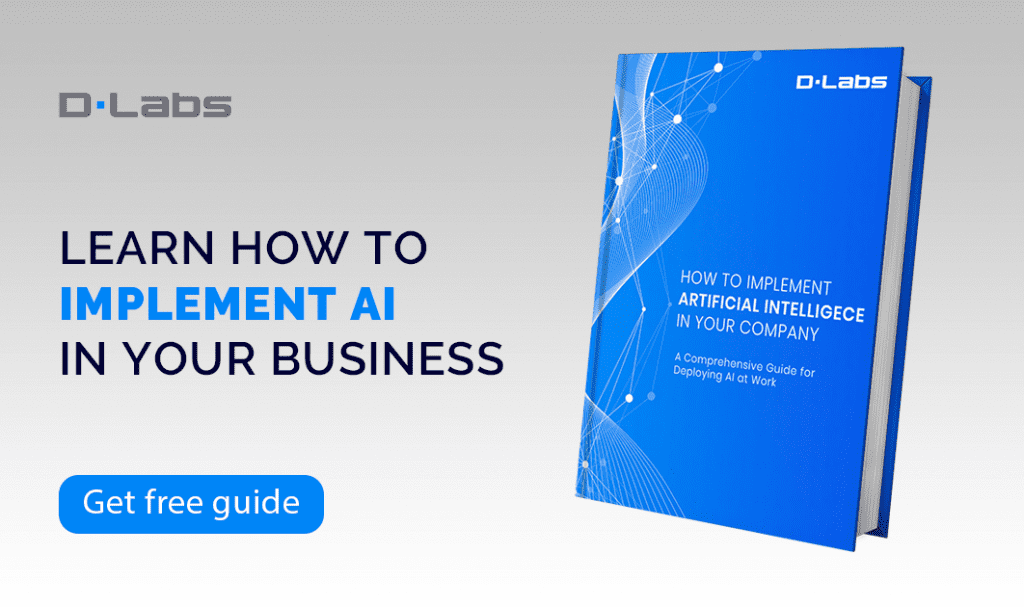As the pandemic took hold and society closed down, e-learning let educational institutions continue to teach their students. And over the last eighteen months, more and more solutions have helped improve the quality and effectiveness of online learning.
Artificial intelligence has played a crucial role across the e-learning industry. According to a Global Market Insights report, AI in education will surpass USD 6 billion by 2024. In this article, you’ll find five examples of how AI is transforming e-learning today.
1. Crafting personalized learning experiences
In educational environments, learners typically receive the same content.
Given how challenging it would be for a teacher to meet every student’s needs by providing personalized materials, that’s no surprise.
But a more effective framework would acknowledge individual capabilities. And that’s precisely how artificial intelligence can help. Teachers can get AI to track each student’s performance, then use the data to adjust the material, providing a personalized learning experience.
And that’s not all.
AI can transform the teaching experience from one where students simply memorize facts to pass an exam to a style where teachers adapt how they teach, ensuring the style fits the learner’s current level, comfort, and emotional state.
Better still, AI can adapt in real-time, accommodating a student’s evolving state, drastically improving results.
With such personalization, every learner could enjoy a unique education based on their needs and capabilities. And this wouldn’t only improve a student’s motivation and reduce the probability of them dropping out.
It would offer educators a better understanding of each student’s learning process, enabling them to teach more efficiently.
Let’s make things concrete with an example.
Some students need additional tutoring to keep up. In contrast, others advance so rapidly that the materials fail to challenge them, and they’d benefit from additional content. In both scenarios, AI learning systems could help the students hit their potential.
Querium offers this, delivering personalized tutoring lessons across science, technology, engineering, and mathematics (STEM).
The AI platform analyzes how long it takes a student to complete a session, alongside the answers they give, then gives insights into each student’s learning habits — before designating areas in which they need extra help to improve.
2. Offering 24/7 support with chatbots in e-learning
E-learning mixes online courses and instructor-led training. But there’s no telling when a student might need support.
That could mean a teacher has to be available at all hours (which is unlikely). But the offer of real-time responses, 24-hours-a-day, is possible if teachers deploy an AI assistant within an e-learning course.
Thanks to machine learning and natural language processing, AI assistants can analyze messages, content, or speech, then answer the query just like a person. In doing so, they can provide guidance, answer questions, and solve problems as they crop up, alongside offering four other benefits:
- Objectivity: unlike people, chatbots will never show bias towards a particular student. That means they offer a more objective way to evaluate performance.
- Self-study: self-education has been a trend for the last few years. People are taking the educational initiative, and chatbots are helping them systemize learning.
- Motivation: chatbots can encourage students to perform better, giving valuable tips and insights while reminding them not to slack off via push notifications.
- Access: chatbots are omnipresent, available in browsers, mobile apps, and via social media.
Here’s proof of how effective chatbots can be.
The University of Murcia in Spain tried a chatbot for answering student questions about the campus and the available fields of study.
During the trial, the administrators were surprised to discover it could answer more than 38,708 questions with more than 91% accuracy. University officials also found the chatbot improved student motivation through curiosity.
Other universities have also begun testing chatbots for monotonous tasks that would typically require faculty or staff members.
Georgia Tech (USA) and Staffordshire University (UK) have rolled out chatbots to offer 24/7 replies to FAQs, giving teachers more time to educate their students and engage in research.
Another AI application, called Woebot, helps users understand their emotions with intelligent mood tracking, raising the possibility of chatbot-enabled counseling for on-call mental health support.
3. Tracking motivation with engagement detection in e-learning
In a physical classroom, teachers can quickly identify when students are bored, distracted, or stressed based on their facial expressions or body language.
But when reading, writing, or doing exams online, learners can only show engagement by expressing frustration, boredom, delight, confusion, or neutrality. That’s why online educators need a way to detect emotions if they’re to understand student engagement.
Artificial intelligence can enable this, primarily through computer vision and sensor data analysis.
The techniques rely on extracting features from various traits captured by imagery, physiological, or neurological sensors — or by tracing activities in the learner’s environment.
Here’s how the techniques work.
Sensor data analyses
Neurological and physiological sensor readings gauge attention and alertness by tracking various measures, including blood pressure, heart rate, and EEG. However, these measures require specialized sensors and aren’t practical in real-life educational settings.
Computer vision
This technology gauges attention based on eye movement, gestures, postures, and facial expressions. Computer vision-based methods work well because they’re unobtrusive, easy to use, and similar to real life (where a teacher observes if a learner is motivated without interrupting them).
4. Improving written assignments with intelligent assistants
Written assignments are integral to learning. And in the era of e-learning, AI can help students improve the quality of their papers.
Intelligent assistants can develop ideas, find relevant data, even craft better phrases. In truth, a variety of software and web-based programs can improve all manner of content, including articles, academic essays, and blog posts.
Here are some of the best-known AI-based writing tools:
Grammarly
Grammarly is one of the most popular AI-based editing tools. It helps users deliver mistake-free content by identifying problems in the text and suggesting how to correct them. It offers advice on grammar, tone, word choice, and clarity, while the tool can also detect plagiarism.
ProWritingAid
ProWritingAid improves style by finding repeated words, vague phrases, and unnecessary adverbs. It also identifies uses of hard-to-read sentences and the passive voice, while students can customize options and choose a writing style to fit their needs. The application works with MS Office, Google Docs, and Chrome (as an extension or email plugin).
Linguix & Linguix Education
These proofreading tools help students spot mistakes in grammar, vocabulary, word choice, and spelling. And while Linguix helps with any content, Linguix Education was designed with students in mind.
The feature set is basic, but the tool is an excellent source for improving writing style. Its database has many text templates with different topics and purposes. This way, students can learn how to express an idea in various ways.
5. Removing language barriers with automated translation
Thanks to automated translation, language is no longer a barrier to learning.
Machine translation is perhaps the best-known AI service, with powerful engines from Google, Microsoft, and Amazon translating foreign texts into any local language (and vice versa).
Another popular tool is Natural Language Processing (NLP) combined with Voice Recognition, which converts human speech into binary code. The process lets computers understand spoken language, enabling learners to communicate with the AI assistants mentioned in point two.
AI can even account for accents, ignore background noise, detect variations in human sounds, and more.
Here are several companies helping students remove the language barrier.
JR Language
The tool works across various mediums and file formats, providing specific e-learning materials. It can deliver a multilingual learning environment for students or trainees, no matter where they are or what language they speak.
DeepL
DeepL operates based on neural networks, enabling it to translate entire documents. According to its creators, the service uses a newer, significantly improved architecture, resulting in a more natural-sounding translation compared to competing services.
Taia
Taia uses a combination of best-in-class neural language networks developed by tech industry giants to serve up instant translations across 90 languages. The unique setup enables higher quality, more natural-sounding translations than traditional statistical machine translation technology (SMT).
Taia automatically selects the most specialized neural network for the target language, helping translators make better-informed edits. It can translate transcriptions in any of the 90 languages — or transcribe meetings, interviews, video conferences, YouTube videos, podcasts, and other audio or video content.
Sounds great, but what are the risks?
While artificial intelligence improves the e-learning experience, the technology has a few risks.
Some tools perform comprehensive research, then summarize the findings into an article. Others scan the web for data, create academic papers, and include the appropriate references in the correct format, letting students write assignments in a matter of clicks.
And when you consider that most software is smart enough to avoid plagiarism, the incentive to use it only goes up. Which is why educators need to encourage students to see AI writing tools like a calculator.
Only use them for the correct purpose — and in the appropriate context. That way, you can help students learn online in the most effective way possible.
Transform e-learning with custom AI software. Get in touch with Dlabs today to find the most effective solution for your business.





